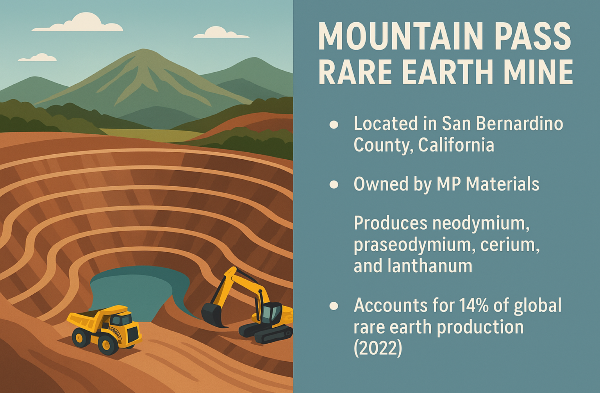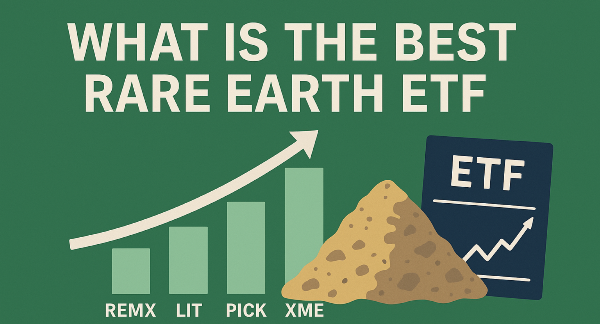Should You Put All Your Money in Dividend Stocks? A Balanced Perspective
The allure of a consistent income stream from dividend stocks is undeniably tempting, often leading investors to ponder concentrating their entire portfolio in these income-generating assets. Dividend stocks represent shares in companies that distribute a portion of their earnings to shareholders, appealing greatly to those seeking regular cash flow, like retirees, or investors aiming for perceived stability in their holdings. However, while dividend stocks offer attractive income potential, the notion of allocating all your money in stocks, specifically just dividend payers, is generally not a prudent strategy. This article will delve into the significant risks associated with such a concentrated approach, emphasizing why portfolio diversification is absolutely critical for long-term financial health and why a well-balanced investment strategy almost always outperforms a singular focus.
The Undeniable Benefits of Including Dividend Stocks
While we advocate against exclusivity, the benefits of incorporating dividend stocks into your portfolio are clear and compelling. First and foremost, they provide a regular income stream, delivering consistent cash flow that can be particularly appealing for retirees, those seeking supplemental income, or even helping to offset the corrosive effects of inflation over time. Beyond just income, many dividend-paying companies are mature, stable businesses that still offer significant potential for capital appreciation as they continue to grow their operations. Furthermore, consistent dividend growth often signals a company's financial strength and robust health. The power of compounding returns through dividend reinvestment (DRIPs) also cannot be overstated, as reinvesting payouts to acquire more shares can significantly boost long-term wealth accumulation. Finally, dividend stocks are often associated with financially sound, established companies, offering a perceived sense of stability and potentially some downside protection during market downturns, though they are certainly not immune to volatility.
The Significant Perils of a 100% Dividend Stock Portfolio
Despite their advantages, concentrating all your money in dividend stocks exposes your portfolio to substantial and unnecessary risks. The primary concern is a severe lack of diversification, creating a single point of failure. This manifests in various ways: sector concentration risk, where an over-reliance on dividend-heavy sectors (like utilities, financials, or consumer staples) leaves you vulnerable if those specific industries face headwinds. There's also acute company-specific risk; if a single major holding experiences financial distress and is forced to cut or eliminate its dividend, it could severely impact your entire portfolio. Beyond concentration, a pure dividend portfolio might also miss out on significant growth opportunities presented by non-dividend-paying, rapidly expanding companies. Furthermore, dividend stocks can be sensitive to interest rate changes, becoming less attractive when bond yields rise. Finally, investors must consider tax implications (dividends are taxable income), the risk of inflation eroding purchasing power if dividend growth lags, and the danger of falling into "value traps" where a high dividend yield signals a declining business rather than a healthy one.
Why Diversification is Crucial for Your Investment Portfolio
When considering if you should put all your money in dividend stocks, the concept of portfolio diversification emerges as a non-negotiable cornerstone of sound investing. Diversification isn't just a buzzword; it's a fundamental strategy for spreading risk across asset classes. By investing in a mix of different types of assets—such as stocks (including both dividend and growth-oriented companies), bonds for stability, real estate, and potentially even commodities—you significantly reduce your exposure to the inherent risks of any single market or asset type. This broad approach helps in mitigating market volatility, as different asset classes tend to perform differently under various economic conditions, smoothing out overall portfolio returns. Ultimately, true diversification allows you to achieve a crucial balance between the income potential of dividend stocks and the capital appreciation offered by growth investments, creating a more robust and resilient financial foundation tailored to your unique financial goals and risk tolerance.
Crafting a Balanced Investment Strategy Beyond Just Dividends
Instead of asking, "Should I put all my money in dividend stocks?", a more effective approach involves crafting a balanced investment strategy that aligns with your individual financial landscape. This begins with a thorough assessment of your financial goals, whether they're short-term savings, long-term retirement planning, or specific income needs. Equally important is determining your risk tolerance – how much market fluctuation can you comfortably endure without losing sleep? Your time horizon also plays a key role; longer horizons generally allow for greater exposure to growth-oriented assets and more time to recover from potential downturns. While dividend stocks can be strategically integrated as a valuable component for income, they should not be the sole focus. Ensure you include growth-oriented investments to capture opportunities in innovative companies and expanding sectors. Furthermore, explore other asset classes like bonds for stability and real estate for diversification and potential long-term appreciation. Regular portfolio review and rebalancing are also critical to ensure your strategy remains aligned with your evolving goals and market conditions.
Conclusion: A Holistic Approach to Wealth Building
In conclusion, while dividend stocks undeniably offer attractive benefits like consistent income and a perceived sense of stability, the answer to "Should I put all my money in dividend stocks?" is a resounding no. A 100% allocation to any single asset class, even dividend stocks, introduces undue risk and potential for significant financial setbacks. The key takeaway for any aspiring or seasoned investor is that portfolio diversification is absolutely essential for managing risk effectively and achieving sustainable, long-term financial success. A well-diversified portfolio intelligently blends various asset classes, combining the income potential of dividend stocks with the growth opportunities of other investments, while also incorporating elements of stability. We strongly recommend consulting with a qualified financial advisor to help you build a personalized investment strategy that prudently balances income, growth, and risk, leading to a more secure and robust path to wealth building.




























Should You Put All Your Money in Dividend Stocks? A Balanced Perspective
The allure of a consistent income stream from dividend stocks is undeniably tempting, often leading investors to ponder concentrating their entire portfolio in these income-generating assets. Dividend stocks represent shares in companies that distribute a portion of their earnings to shareholders, appealing greatly to those seeking regular cash flow, like retirees, or investors aiming for perceived stability in their holdings. However, while dividend stocks offer attractive income potential, the notion of allocating all your money in stocks, specifically just dividend payers, is generally not a prudent strategy. This article will delve into the significant risks associated with such a concentrated approach, emphasizing why portfolio diversification is absolutely critical for long-term financial health and why a well-balanced investment strategy almost always outperforms a singular focus.
The Undeniable Benefits of Including Dividend Stocks
While we advocate against exclusivity, the benefits of incorporating dividend stocks into your portfolio are clear and compelling. First and foremost, they provide a regular income stream, delivering consistent cash flow that can be particularly appealing for retirees, those seeking supplemental income, or even helping to offset the corrosive effects of inflation over time. Beyond just income, many dividend-paying companies are mature, stable businesses that still offer significant potential for capital appreciation as they continue to grow their operations. Furthermore, consistent dividend growth often signals a company's financial strength and robust health. The power of compounding returns through dividend reinvestment (DRIPs) also cannot be overstated, as reinvesting payouts to acquire more shares can significantly boost long-term wealth accumulation. Finally, dividend stocks are often associated with financially sound, established companies, offering a perceived sense of stability and potentially some downside protection during market downturns, though they are certainly not immune to volatility.
The Significant Perils of a 100% Dividend Stock Portfolio
Despite their advantages, concentrating all your money in dividend stocks exposes your portfolio to substantial and unnecessary risks. The primary concern is a severe lack of diversification, creating a single point of failure. This manifests in various ways: sector concentration risk, where an over-reliance on dividend-heavy sectors (like utilities, financials, or consumer staples) leaves you vulnerable if those specific industries face headwinds. There's also acute company-specific risk; if a single major holding experiences financial distress and is forced to cut or eliminate its dividend, it could severely impact your entire portfolio. Beyond concentration, a pure dividend portfolio might also miss out on significant growth opportunities presented by non-dividend-paying, rapidly expanding companies. Furthermore, dividend stocks can be sensitive to interest rate changes, becoming less attractive when bond yields rise. Finally, investors must consider tax implications (dividends are taxable income), the risk of inflation eroding purchasing power if dividend growth lags, and the danger of falling into "value traps" where a high dividend yield signals a declining business rather than a healthy one.
Why Diversification is Crucial for Your Investment Portfolio
When considering if you should put all your money in dividend stocks, the concept of portfolio diversification emerges as a non-negotiable cornerstone of sound investing. Diversification isn't just a buzzword; it's a fundamental strategy for spreading risk across asset classes. By investing in a mix of different types of assets—such as stocks (including both dividend and growth-oriented companies), bonds for stability, real estate, and potentially even commodities—you significantly reduce your exposure to the inherent risks of any single market or asset type. This broad approach helps in mitigating market volatility, as different asset classes tend to perform differently under various economic conditions, smoothing out overall portfolio returns. Ultimately, true diversification allows you to achieve a crucial balance between the income potential of dividend stocks and the capital appreciation offered by growth investments, creating a more robust and resilient financial foundation tailored to your unique financial goals and risk tolerance.
Crafting a Balanced Investment Strategy Beyond Just Dividends
Instead of asking, "Should I put all my money in dividend stocks?", a more effective approach involves crafting a balanced investment strategy that aligns with your individual financial landscape. This begins with a thorough assessment of your financial goals, whether they're short-term savings, long-term retirement planning, or specific income needs. Equally important is determining your risk tolerance – how much market fluctuation can you comfortably endure without losing sleep? Your time horizon also plays a key role; longer horizons generally allow for greater exposure to growth-oriented assets and more time to recover from potential downturns. While dividend stocks can be strategically integrated as a valuable component for income, they should not be the sole focus. Ensure you include growth-oriented investments to capture opportunities in innovative companies and expanding sectors. Furthermore, explore other asset classes like bonds for stability and real estate for diversification and potential long-term appreciation. Regular portfolio review and rebalancing are also critical to ensure your strategy remains aligned with your evolving goals and market conditions.
Conclusion: A Holistic Approach to Wealth Building
In conclusion, while dividend stocks undeniably offer attractive benefits like consistent income and a perceived sense of stability, the answer to "Should I put all my money in dividend stocks?" is a resounding no. A 100% allocation to any single asset class, even dividend stocks, introduces undue risk and potential for significant financial setbacks. The key takeaway for any aspiring or seasoned investor is that portfolio diversification is absolutely essential for managing risk effectively and achieving sustainable, long-term financial success. A well-diversified portfolio intelligently blends various asset classes, combining the income potential of dividend stocks with the growth opportunities of other investments, while also incorporating elements of stability. We strongly recommend consulting with a qualified financial advisor to help you build a personalized investment strategy that prudently balances income, growth, and risk, leading to a more secure and robust path to wealth building.